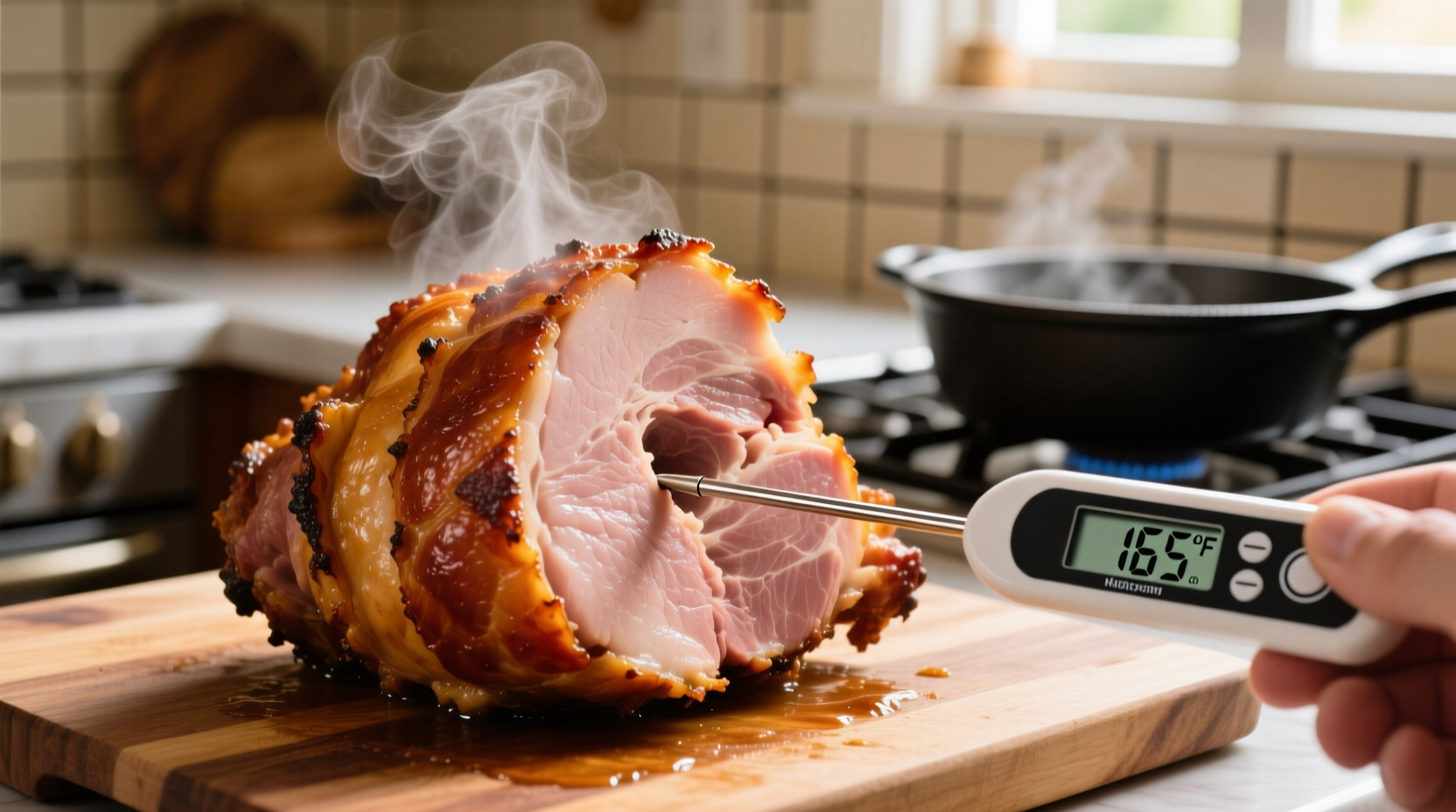The Perfect Reheating Formula for Precooked Ham
When you've got a holiday centerpiece or Sunday dinner planned, nothing's more disappointing than a dry, tough ham. The secret lies in understanding that precooked ham isn't fully cooked for serving - it's been cured and cooked once at the factory, but requires proper reheating to achieve that perfect balance of food safety and texture.
Why Timing Matters: Food Safety Meets Culinary Quality
Underheating risks foodborne illness from potential bacterial growth, while overcooking transforms your expensive ham into a dry, chewy disappointment. The USDA's Food Safety and Inspection Service confirms that reheated ham must reach 140°F to be safe, but going beyond 145°F starts damaging the delicate protein structure that keeps ham moist.
Your Step-by-Step Reheating Roadmap
Follow this proven sequence for consistently perfect results:
Preparation Phase: Setting Up for Success
- Thaw completely if frozen (allow 4-5 hours per pound in refrigerator)
- Score the surface in a diamond pattern to help heat penetrate evenly
- Apply glaze during the last 20-30 minutes to prevent burning
- Cover loosely with foil to retain moisture during most of cooking time
Cooking Phase: Precision Timing Guide
The following table shows exact timing based on your ham's weight. Always verify with a meat thermometer regardless of timing:
| Ham Weight | Conventional Oven Time | Convection Oven Time | Target Internal Temp |
|---|---|---|---|
| 5-7 lbs | 50-105 minutes | 38-79 minutes | 140°F |
| 7-9 lbs | 70-135 minutes | 53-101 minutes | 140°F |
| 9-12 lbs | 90-180 minutes | 68-135 minutes | 140°F |
Verification Phase: Beyond the Clock
Timing provides a guideline, but temperature determines doneness. Insert an instant-read thermometer into the thickest part (avoiding bone):
- 140°F = Perfectly reheated (USDA safe minimum)
- 145°F = Slightly over (beginning of moisture loss)
- 150°F+ = Significantly dry (avoid at all costs)

Four Critical Factors That Change Cooking Time
Understanding these variables prevents timing mistakes:
1. Bone Presence Alters Heat Distribution
Bone-in hams require approximately 10-15% more time than boneless equivalents because bone conducts heat differently. The meat closest to the bone heats more slowly, requiring extended time for even reheating throughout.
2. Oven Type Changes Heat Dynamics
Convection ovens circulate hot air, reducing cooking time by 25% compared to conventional ovens. If using convection, either reduce temperature by 25°F or shorten cooking time proportionally - but always verify with a thermometer.
3. Starting Temperature Matters More Than You Think
A ham straight from the refrigerator requires 20-30 minutes more cooking time than one brought to room temperature. However, food safety experts from Kansas State University Extension warn against leaving ham at room temperature longer than 2 hours before cooking.
4. Glaze Application Timing Affects Results
Applying sugary glazes too early causes burning. Professional chefs consistently recommend adding glaze during the final 20-30 minutes of cooking. This timing allows flavors to penetrate without caramelizing excessively.
Avoid These Three Costly Mistakes
Even experienced cooks make these ham reheating errors:
Mistake #1: Relying Solely on Time Without Temperature Verification
Oven temperatures vary significantly. A study by the National Center for Home Food Preservation found home ovens can deviate by ±25°F from set temperature. Always use a calibrated meat thermometer - timing alone can't guarantee safety or quality.
Mistake #2: Skipping the Resting Period
Allowing ham to rest for 15-20 minutes after cooking serves two critical functions: juices redistribute throughout the meat (preventing dry slices), and carryover cooking raises internal temperature 5-10°F. Cutting too soon releases precious moisture onto your cutting board.
Mistake #3: Overlooking Ham Type Differences
"Precooked" includes several varieties with different requirements:
- City ham (wet-cured): Most common, requires standard reheating
- Country ham (dry-cured): Often needs soaking before reheating
- Spiral-cut: Requires shorter time (5-7 min/lb) to prevent drying
Proven Techniques for Maximum Moisture Retention
Professional kitchens use these science-backed methods:
- Water bath method: Place ham in roasting pan with 1” of water to create steam environment
- Foil tenting: Cover tightly for first 75% of cooking, then remove for browning
- Basting intervals: Every 30 minutes with natural juices or apple cider
- Temperature monitoring: Check internal temp starting at 75% of estimated time
Serving and Storage Best Practices
For perfect presentation and food safety:
- Carve against the grain using a sharp slicing knife
- Serve immediately after resting period for optimal texture
- Refrigerate leftovers within 2 hours (USDA requirement)
- Store in airtight container for up to 3-4 days
- Reheat leftovers to 165°F for food safety











 浙公网安备
33010002000092号
浙公网安备
33010002000092号 浙B2-20120091-4
浙B2-20120091-4